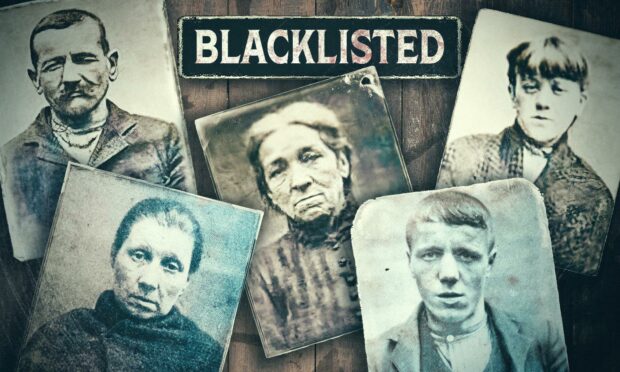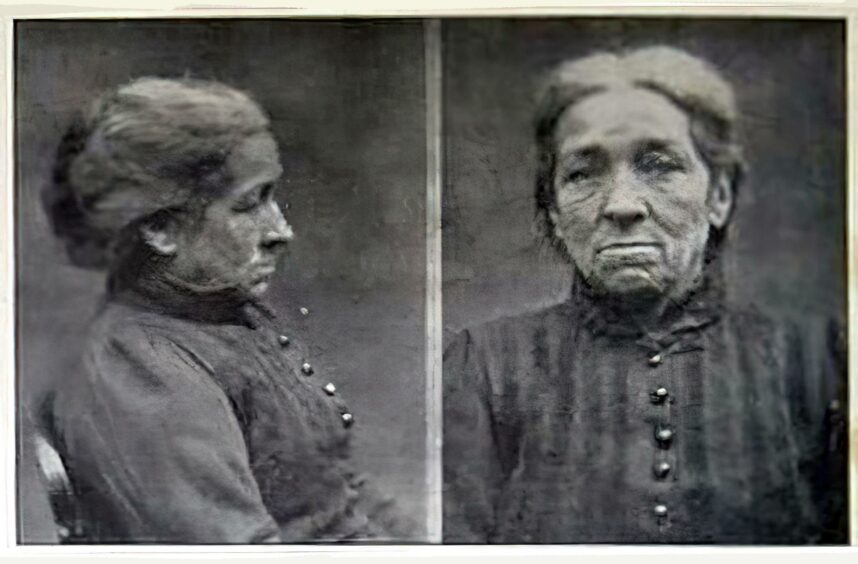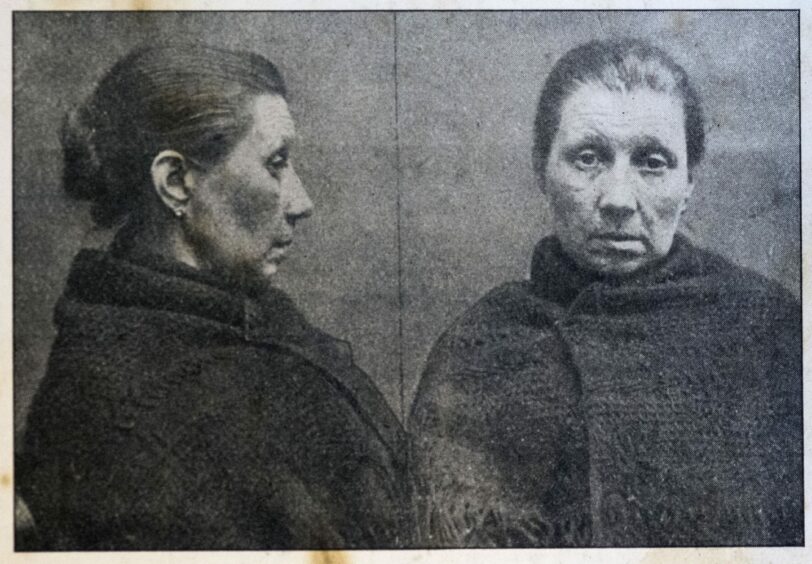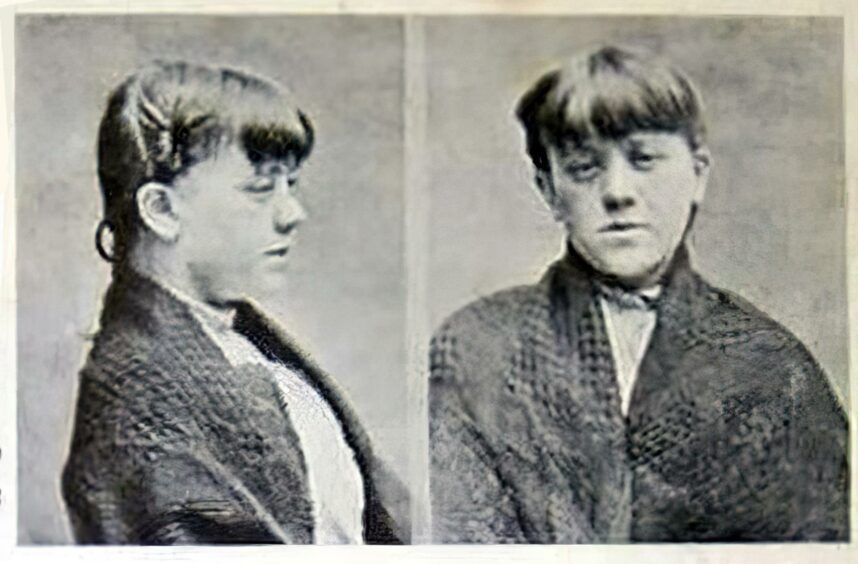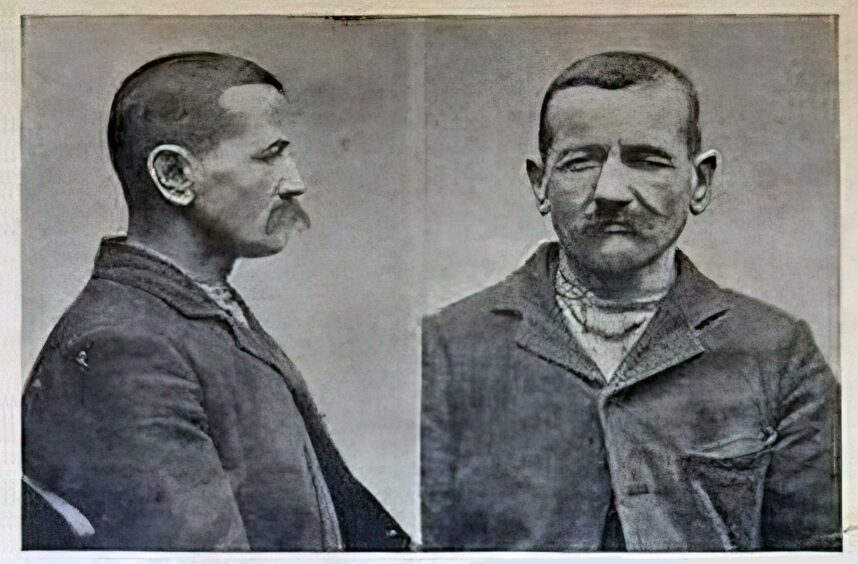Meet the Victorian criminals who unwittingly found themselves named and shamed on Dundee’s Black List in 1905.
These 42 Dundonians had their names and faces splashed all over the papers in the early 1900s with a firm warning – they were not to be given any more booze.
There were seven men and 35 women, aged from 16 to 63.
Each offender’s description given to city publicans was accompanied by a haunting mugshot and a description of any “peculiarities or marks”.
But just who were these people on the 1905 Black List?
And what were their crimes?
Drinking in the last-chance saloon
Life was rough and tough in Dundee, which was a rapidly growing manufacturing town and shipping port in the 19th Century.
Large numbers of people came to the city in search of work in the jute industry.
An increase in population and wealth brought an increase in crime and housebreakings, thefts, assaults and robberies began to occur frequently.
Most of the crime in this period in Victorian Dundee was attributed to drunkenness, and drinking was especially rife in the city’s poverty-stricken areas.
Drunkenness among jute mill workers and factory workers had become problematic with no fewer than 453 houses licensed for the sale of alcohol.
One early commentator spoke of “wretched men and women” and “very young children in dirt and rags” who streamed in and out of public houses at all hours.
This backdrop of concerns over binge drinking and women adopting masculine drinking patterns continued into the beginning of the 1900s.
The Register of Inebriates was introduced for repeat offenders – those who had been apprehended for drunkenness more than three times over a 12-month period.
It was known by the newspapers as the ‘Dundee Roll of Fame’ or the ‘Black List’.
The Black List was first introduced in February 1905 and was soon compiled into a handy book that could be passed around the city’s bars.
Reports of similar lists having “beneficial results” in other cities had encouraged the magistrates to introduce the measures in Dundee.
The list prevented anyone who was unfortunate enough to find their name on it from buying alcohol at any licensed premises for the next three years.
Licensees would also be fined up to £20 if they served these inebriates.
So who was on the Black List?
Among those on the register was Margaret Devannah, who at just 16 was found guilty of “behaving while drunk in a riotous or disorderly manner”.
The book says Bailie Doig referred to her as “the most lamentable case that had come before court – she was little more than a child”.
In 1933, at the age of 43, Margaret then appeared before the police court for the 90th time charged with being drunk and incapable.
She died in the poor house three years later.
Another entry was 44-year-old Harriet Croll, a mill worker from Fife who was living in Brown Street.
She was described in the book as “pock-pitted” with a wart and a finger deformity, with a string of convictions.
Despite her chaotic life, Harriet lived to be 70, considered a reasonable age for the time.
Among the men was fish dealer John Boyd, a 46-year-old of “proportionate” build, with a “fresh” complexion, who was convicted at Dundee’s police court after he was found “in a state of intoxication and unable to look after himself” on November 13 1905.
The large number of women who worked in the thriving jute mills of Dundee perhaps explains the large number of women in the mug shots.
Female employment being higher than male employment meant they earned the money and led the city to be known as ‘she town’.
These women were beginning to have their first taste of independence and were not to be deterred by finding themselves named and shamed on the Black List!
Proceedings at Dundee Police Court in August 1905 reportedly turned violent when latest “black-lister” Lily Cruickshanks boldly exclaimed: “I’ll get drunk in spite of you!”
And Caroline Martin, found outside the Overgate, defiantly added: “Though the black flag has been hoisted, I’ll get drunk again. The day I get out!”
Last orders for the Black List
The Black List was soon dubbed a failure.
Those who were on the list were found in court again on the same charges before their ban was up so it wasn’t as effective as the magistrates had hoped.
Did these offenders receive any help for alcoholism?
Some were sent to “Inebriates Houses” – the modern-day rehabilitation centre – but if that was still unsuccessful, offenders were sent to Dundee.
Dundee, Australia, that is…
The legacy of the Black List lives on through Michael Marra.
The much-missed Dundee singer-songwriter immortalised the people who were named and shamed in the early 1900s with his song Muggy Shaw.
Michael combined the stories to make the fictional character of Muggy, who was banned from all the pubs in Dundee.
A surviving copy of the Black List was put up for auction in 2014 by Dundee auction firm Curr and Dewar.
The book was donated by a former landlord who ran a pub on the site of the current Bissell’s Bar on Dundee’s Polepark Road.
At the time, the book was valued at £50 to £100.
It later sold for £1,500.
There is also a copy of the Black List in Wellgate Library’s Dundee Local History Collection.
You might also like:
Camperdown Works closure in 1981 marked the end of an era for Dundee jute empire
